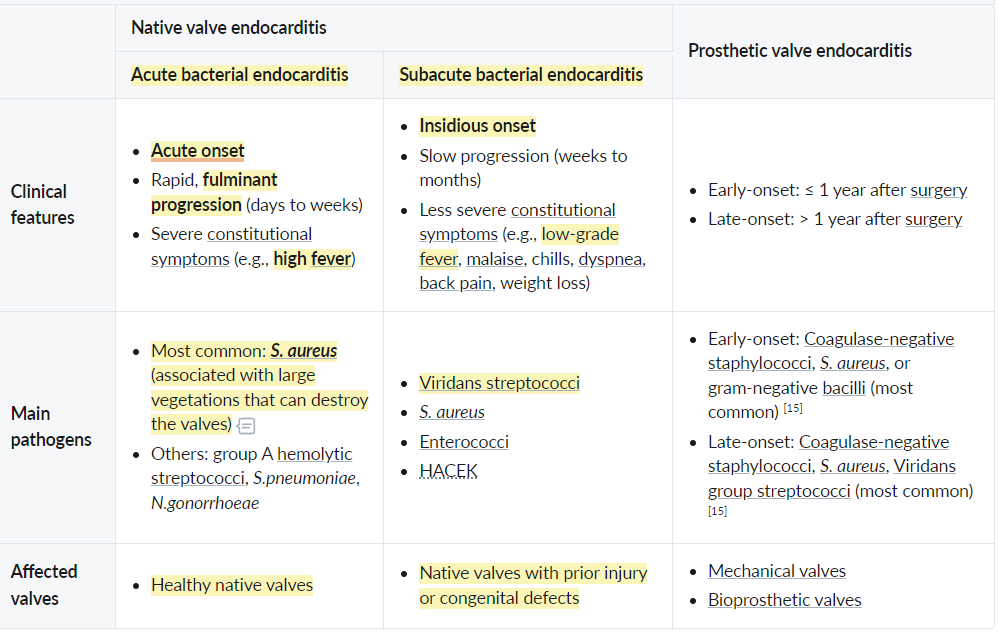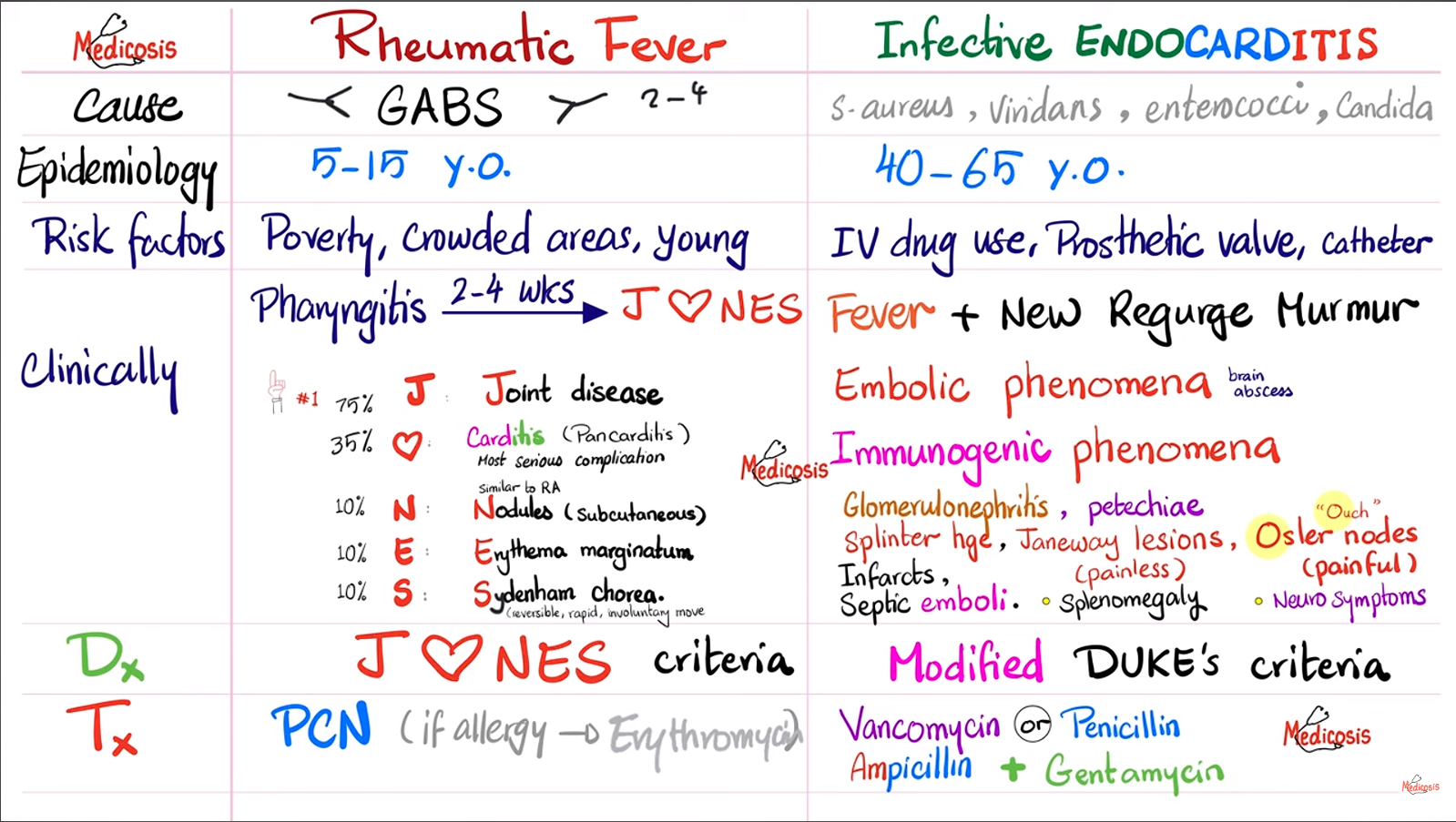Infective endocarditis
Etiology
Pathogens
| Staphylococcus aureus | - Approximately 35–40% of native valve IE cases - Most common cause of acute IE, including persons who inject drugs and patients with prosthetic valves or pacemakers/ICDs - Typically affects healthy valves. - Usually fatal within 6 weeks if left untreated |
|---|---|
| Viridans streptococci | - Approximately 20% of native valve IE cases - Most common cause of subacute IE, especially in predamaged native valves (mainly the mitral valve) - Common cause of IE following dental procedures, respiratory tract incision and biopsy - Produce dextrans from sucrose that facilitate binding of fibrin-platelet aggregates on heart valves. This ability also enable it to survive on teeth. |
| Staphylococcus epidermidis | - Bacteremia from infected peripheral venous catheters - Common cause of subacute IE in patients with prosthetic heart valves |
| Enterococci (especially Enterococcus faecalis) | - Multiple drug resistance - Common cause of IE following nosocomial UTIs - Following gastrointestinal or genitourinary procedures |
| Streptococcus gallolyticus subsp. gallolyticus (Sgg) (Formerly known as Streptococcus bovis biotype I) |
Associated with colorectal cancer The colonic tumor provides an entry point for bacteria. |
Risk factors for infective endocarditis
- Cardiac conditions
- Acquired valvular disease (e.g., Mitral valve prolapse (most common), rheumatic heart disease, aortic stenosis, degenerative valvular disease)
- Prosthetic heart valves
- Congenital heart defects (e.g., VSD, bicuspid aortic valve)
- Noncardiac risk factors
- Poor dental status
- Dental procedures
- Nonsterile venous injections (e.g., in IV drug use)
- Intravascular devices
- Surgery
Pathophysiology
- Pathogenesis
- Damaged valvular endothelium → exposure of the subendothelial layer → adherence of platelets and fibrin → sterile vegetation (microthrombus)
- Localized infection or contamination → bacteremia → bacterial colonization of vegetation → formation of fibrin clots encasing the vegetation → valve destruction with loss of function (valve regurgitation)
- Clinical consequences
- Bacterial vegetation → bacterial thromboemboli → vessel occlusion → infarctions
- Emboli can lead to metastatic infections of other organs.
Classifications

Coagulase-negative staphylococci (CoNS): Staphylococcus epidermidis, Staphylococcus saprophyticus
Clinical features
Cardiac manifestations
- Development of a new heart murmur or change in a preexisting murmur
- Tricuspid valve regurgitation
- Holosystolic murmur that is loudest at the left sternal border
- Seen in persons who inject drugs, immunocompromised individuals, patients with congenital heart disease, and patients with instrumentation in the right heart (e.g., central venous catheters)
- Aortic valve regurgitation: early diastolic murmur that is loudest at the left 3rd and 4thintercostal spaces and along the left sternal border
- Mitral valve regurgitation: holosystolic murmur that is loudest at the heart's apex and radiates to the left axilla
- Tricuspid valve regurgitation
Extracardiac manifestations of IE
- Pulmonary manifestations: caused by septic emboli resulting from tricuspid valve involvement
- Signs of pulmonary embolism (e.g., dyspnea)
- Signs of pulmonary infection, e.g., multifocal pneumonia, lung abscess, and/or empyema.

